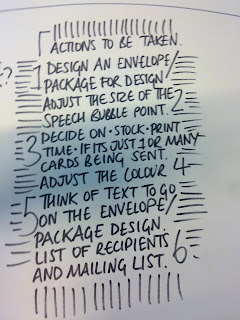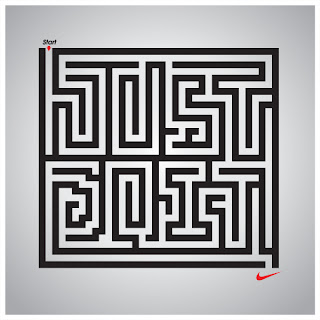The problem we identified in our group was 'How to Make Christmas Dinner Less Stressful'. This was a more focused 'how to' than the one we discussed in our progress crit, which was 'How to save money and time at Christmas'. We were told to really refine the idea, which helped to give us more focus for the end product.
In terms of evidence for our 'How To', it's a well published fact that Christmas, and Christmas Dinner in particular can be a very stressful period for adults, who are given the responsibility of preparing the whole meal, which takes up a large portion of the day. There are television shows and pages and pages of magazines devoted to the Christmas meal.
As a group we also took surveys asking people for their opinions of it, and all agreed it was a very stressful task.
We collected various research to inform us during this brief, including surveys (primary quantitative and qualitative) which gave us provable data, and also the opinions of our main target audience, female adults. We also gathered secondary qualitative and quantitative research, which included looking at price comparison websites to look at the difference in price between various christmas dinner items (however this was in conflict with our idea of saving time) and also at various cookery websites and blogs to look for people tips on how others lessen the stress of preparing Christmas dinner.
These tips taken from secondary research helped us the most because they gave us inspiration for what we needed to include in our final product. As a group and singularly I feel like our final product was well informed by our research, and I think although we could have done more research, we had a large and varied amount of information to work with.
If we'd had more time, I feel like I could have collected more primary and secondary quantitative research, but due to the nature of the question we were answering, our main research needed to focus on collecting qualitative research. Perhaps we could have asked more people for their own personal tips and recipes on making Christmas dinner to give us a greater scope.
Researching our 'How To' took quite a lot of time, and we possibly focused too much on generating research as opposed to coming up with design resolutions in the first half of the brief. I also struggled to come up with a clear concept regarding making Christmas dinner less stressful. In terms of format, we wanted to create something that was relevant and useful, so that people wouldn't just throw away whatever we gave them.
Our main focus for the product at first was to create something very light hearted that was based on the idea of joke tips for lessening stress at Christmas. We began with creating 10 tips as a group, and went onto develop design solutions for each one separately. The tips included 'going to a restaurant' or 'having a liquid lunch' which were informed by tips we found online from both women and men.
I tried out several design solutions that focused on recipe cards. One side would be the joke tip, whilst on the other side would be a recipe for an element of Christmas dinner. My design solutions were mainly type based, and the colours and typefaces I used were more directed at a female audience, because I felt that women are the ones who are usually responsible for preparing dinner. As a group we each discussed our designs, and whilst the group liked them, we were struggling to find a way to make sense of the idea, in line with the serious tips we had found the could actually be useful as a handout.
We then went onto develop the idea of a flip card format, that binded 10 recipe cards together, and also a card filled with both serious and jokey tips. This was inspired by the idea of the main tip being 'Be organised'. The recipes are placed in a chronological order in terms of preparing the meal, and the recipes we used are easy to follow and make. The flip card idea worked well because it means that you can place it in the kitchen and read the recipes propped up. It also takes up a lot less space than a normal recipe from a magazine or book.
My main contribution to the group was the front page, the fronts of the recipe cards, and also the card including the tips.
 |
| Design Possibility |
 |
| Design Possibility |
 |
| Final Design Resolutions |
I feel like the end result was very suitable to the supermarket and christmassy environment in which it was being distributed, and it also provided something very useful, as all the information you need is provided in something small, compact and easy to follow, whilst still being quite stylish and aesthetically pleasing.
I feel like I contributed well to the group, although I do feel like at times I could have been a little more restrained when putting ideas and opinions across when it came to the design process. Despite a bit of a struggle with the concept, I feel like our team worked well together and we really came through for the final product and presentation.
List five things that you have learnt about the design process over the last two weeks.
- The design process is cyclical, and research is always valuable in whatever stage of the process you are at
- Quantitive research is key to identifying and understanding the target audience you want to communicate with.
- It's important to create final design solutions as a group so that there is a level of consistency when it comes to creating the final product.
- Making sense of research early on is vital to providing a fully resolved solution if you have a short space of time to complete a brief.
- The larger the amount of research you collect, the better informed you will be.
List five things you would do different next time
- I would want to do more intensive researching earlier in the process, allowing more time to develop an informed concept and design solutions, whilst continuing to go back to research at suitable times.
- Collect more primary quantitative research
- Try to use different source material for collecting secondary research, instead of repaying too heavily on the internet.
- Try to work with a more innovative approach, by trying to include illustrations and perhaps experimenting with different formats.
- Manage time more efficiently.
















































